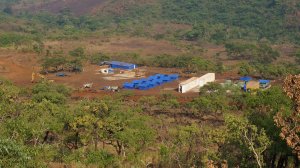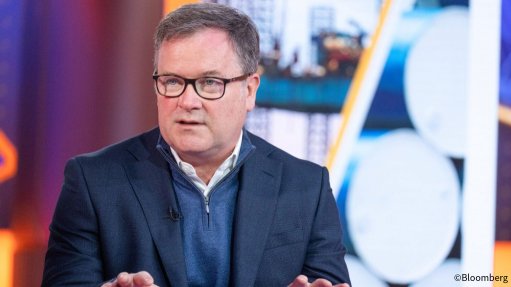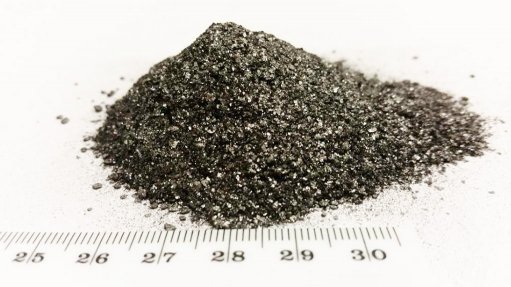Junior miners should find strength in numbers – consultant
JOHANNESBURG (miningweekly.com) – Emerging miners should join associations, share information and facilities and jointly procure the services they needed to enable them to remain competitive and sustainable, a Chamber of Mines (CoM) consultant suggests.
During a presentation at the University of the Witwatersrand School of Mining’s Centre for Sustainability in Mining and Industry, CoM techno-economics consultant Dick Kruger said the chamber engaged in a number of projects to assist junior miners, including an emerging miner mentorship programme that provided financial and marketing support.
His presentation, titled ‘A View on Small Scale and Junior Mining’, sought to reiterate CoM president Mike Teke’s view that the fragmentation of junior mining in South Africa should be brought to an end through consolidation.
Speaking at the Junior Mining Indaba conference earlier this month, Teke encouraged junior miners to become members of the chamber. “Our doors are open,” he said.
JUNIOR MINING OPPORTUNITIES
Kruger believed that the South African gold and platinum sectors did not offer much opportunity for junior, or emerging, miners, as there was not much resource left in the country, while miners in these sectors were also faced with difficult mining and trading conditions, wage disparities and increased recycling rates in Europe.
He urged miners to rather focus their attention on other mining sectors.
He stated that the biggest potential for junior miners in the country was in the coal sector, despite some research suggesting that the country’s known reserves would be depleted by 2050. “In coal, there are a lot of opportunities – Eskom is creating [opportunities] for smaller players."
Teke agreed, stating that coal mining in South Africa’s Waterberg needed to be expedited and that the way was open for juniors to play their part in developing coal resources in this region of the country.
Kruger noted, however, that some of the smaller players were just too small. “The amount of coal they have is barely enough to put a fence around.”
He believed most juniors would only benefit through the establishment of inland coal terminals. Juniors could “truck their coal” to a terminal where it would be washed, separated into different grades and then “trucked” to State-owned power utility Eskom’s power plants or to the ports for export.
“Transnet Freight Rail has been talking about this since 2003, but we are yet to see one [emerge]. There are some private guys who operate something similar near Bethal, [in Mpumalanga,] who have seen success,” he noted.
Kruger further identified the chromite industry as another area that held significant potential for smaller miners, citing Zimbabwe as an example where such miners have found success. “It is a high-volume, low-value product; the real value lies with smelting and making ferrochrome, so once again, it is about [grouping] to be successful,” he explained.
Meanwhile, Kruger said the manganese mining sector was also not conducive for emerging miners. There were only a couple of small operations in the sector, and they were mainly washing old dumps. “The big problem is getting the [manganese] to the right grade and [to transport it].
“The railway line is fully occupied and you are sitting with a manganese load terminal in Port Elizabeth that can handle about 4.5-million to 5-million tons a year. The railway line can, at present, handle about 6-million tons. It has gotten so bad that [some mining companies] are sending rail trucks to Saldanha, transloading them in a very complicated way into containers that they move around and then dump into ships on the freight quay.
“Then there are people who send truckloads of manganese to Richards Bay, out of desperation. The infrastructure is not improving. There is more scope there in providing a private railway line than there is in actually mining the manganese,” he asserted.
Comments
Press Office
Announcements
What's On
Subscribe to improve your user experience...
Option 1 (equivalent of R125 a month):
Receive a weekly copy of Creamer Media's Engineering News & Mining Weekly magazine
(print copy for those in South Africa and e-magazine for those outside of South Africa)
Receive daily email newsletters
Access to full search results
Access archive of magazine back copies
Access to Projects in Progress
Access to ONE Research Report of your choice in PDF format
Option 2 (equivalent of R375 a month):
All benefits from Option 1
PLUS
Access to Creamer Media's Research Channel Africa for ALL Research Reports, in PDF format, on various industrial and mining sectors
including Electricity; Water; Energy Transition; Hydrogen; Roads, Rail and Ports; Coal; Gold; Platinum; Battery Metals; etc.
Already a subscriber?
Forgotten your password?
Receive weekly copy of Creamer Media's Engineering News & Mining Weekly magazine (print copy for those in South Africa and e-magazine for those outside of South Africa)
➕
Recieve daily email newsletters
➕
Access to full search results
➕
Access archive of magazine back copies
➕
Access to Projects in Progress
➕
Access to ONE Research Report of your choice in PDF format
RESEARCH CHANNEL AFRICA
R4500 (equivalent of R375 a month)
SUBSCRIBEAll benefits from Option 1
➕
Access to Creamer Media's Research Channel Africa for ALL Research Reports on various industrial and mining sectors, in PDF format, including on:
Electricity
➕
Water
➕
Energy Transition
➕
Hydrogen
➕
Roads, Rail and Ports
➕
Coal
➕
Gold
➕
Platinum
➕
Battery Metals
➕
etc.
Receive all benefits from Option 1 or Option 2 delivered to numerous people at your company
➕
Multiple User names and Passwords for simultaneous log-ins
➕
Intranet integration access to all in your organisation





















